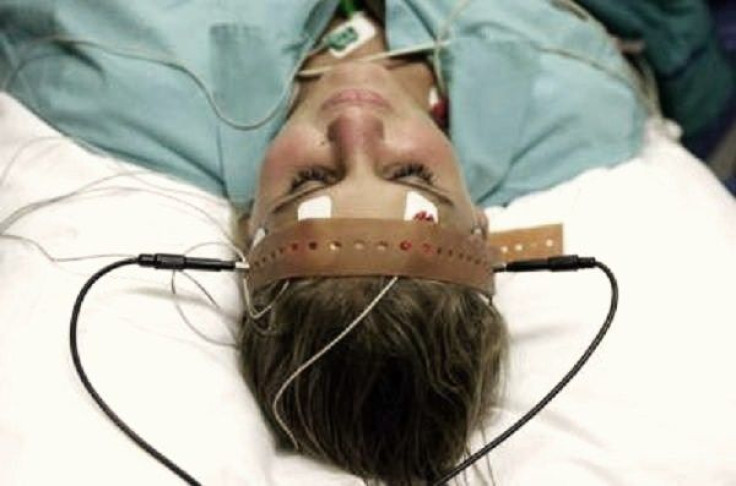Scientists Reveal How Electro-Shock Therapy May Treat Depression after More than 70yrs

Despite treating severe depression with electroconvulsive therapy for more than 70 years, doctors have uncovered the way this controversial therapy could work for the first time in a new study.
Scientists say that electroconvulsive therapy (ECT) also called shock therapy, which involves placing electrodes on the temples to shock the brain and to electrically induce seizure, may treat patients with severe depression by turning down an overactive connection between areas, according to researchers from the University of Aberdeen.
"ECT is a controversial treatment, and one prominent criticism has been that it is not understood how it works and what it does to the brain," lead author Ian Reid, a professor of psychiatry at the University of Aberdeen, said in a statement. "However, we believe we've solved a 70-year-old therapeutic riddle because our study reveals that ECT affects the way different parts of the brain involved in depression connect with one another.
The findings suggest that ECT appeared to dampen the activity of an overactive connection between the brain portions that control mood and the areas responsible for thinking and concentrating to stop the overwhelming impact depression has on patients.
Researchers examined MRI scans of the brains of six male and three female patients diagnosed with severe clinical depression, before and after ECT, and found significantly reduced connectivity after ECT and a considerable improvement in depressive symptoms.
All the patients had been successfully treated with two ECT sessions a week, for an average of four weeks, and previously none of them had responded to chemical antidepressants.
After using a new and complex mathematical analysis to measure any changes in brain connectivity, the investigators were able to measure to what extent more than 25,000 different brain areas 'communicated' with each other and how the brain's internal communication patterns differed before and after ECT treatment in severely depressed patients.
"Our key finding is that if you compare the connections in the brain before and after ECT, ECT reduces the connection strength," Reid said.
While much stigma is attached to ECT, the treatment is one of the safest and most effective treatments available for patients suffering severe depression, mania or other mental illnesses.
While there are some side effects like confusion, memory loss, nausea, muscle aches or spasm, and increase in blood pressure, researchers said that about 75 to 85 percent of patients recover from depression symptoms after ECT.
"For the first time we can point to something that ECT does in the brain that makes sense in the context of what we think is wrong in people who are depressed," Reid added.
Scientists from the latest study hope that the new findings will lead to potential treatments that are less invasive and more acceptable than ECT, currently the most potent and successful treatment for severe depression, and better understanding of the underlying disease mechanisms of other brain disorders like schizophrenia, autism, or dementia.
"At the moment only about 40% of people with depression get better with treatment from their GP. Our findings may lead to new drug targets which match the effectiveness of ECT without an impact on memory," Reid explained.
The findings were published on Monday in the Proceedings of the National Academy of Sciences.



























